July 17, 1944 in Normandy France was a beautiful summer day. To the west, the Allies were in a bitter struggle but continuing to push inward from the beaches and coastal towns against determined resistance from German forces.
Since January the German defences in Normandy had been under the command of Generalfeldmarschall Erwin Rommel, a senior officer not only idolized in Germany, but even highly respected by the Allies.
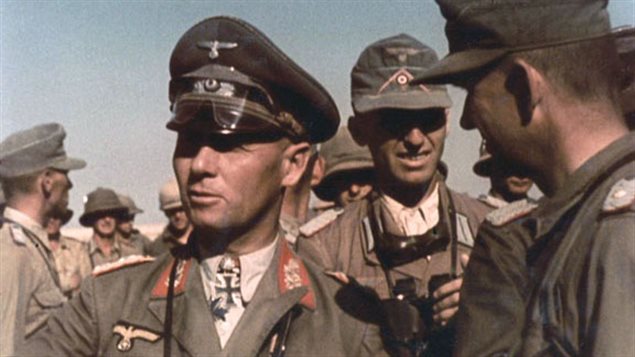
Unlike most of the German High Command, Rommel was well aware of the Allies abilities to recover from attacks, and of their ability to control the air war, which he knew was a critical element.
Also unlike most of the High Command, he also knew that Allies must be defeated on the beaches, which differed from the accepted German plan to counter-attack once the Allies had established a beachhead. Rommel, with his experience in North Africa knew that if the Allies were able to establish a foothold in Normandy, Germany could not win the war.
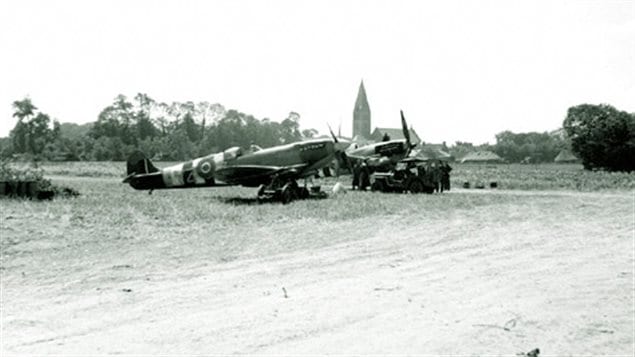
In July, with the feeling that Germany would eventually lose, he nonetheless was dedicated to fighting as best as he could with his resources. However, it appears he had also begun sounding out other senior officers about their views on continuing the war, apparently with an idea of negotiating a secret peace with the Allied commander, General Montgomery.
Canadian Charley Fox changes the direction of the war
In the early evening of July 17, the “Desert Fox” was heading back to his headquarters after meeting with the commander of the 1st SS Panzer Corps, Sepp Dietrich and being assured that the tank commander Dietrich would follow him in whatever he was planning, even against Hitler’s own orders.
Both knew that the Allies basically now ruled the skies over that part of Normandy and Dietrich suggested that Rommel take the back roads and use a small and less conspicuous Kubelwagen. Rommel ignored the idea and left in his large open Horch staff car.
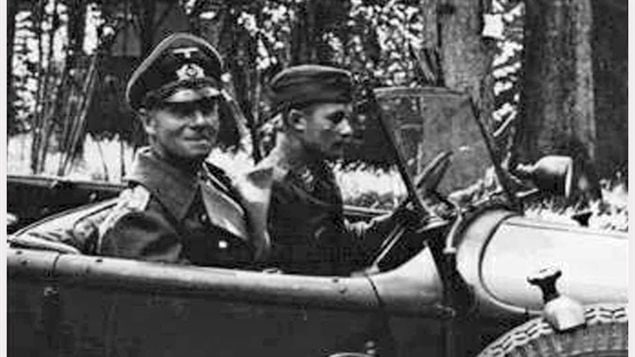
It was early evening when the car was travelling quickly down a road near Ste Foy de Montgommery when spotted by a Canadian Spitfire pilot of RCAF 412 Squadron.
Charley Fox peeled off and with his wingman turned in low sweeping dive to come up behind the staff car and firing a burst from his 20mm cannon.
The car was struck and drove off the road.
“I spotted a large black car travelling at high speed along a road with trees on either side. It was coming towards us, on my left, at about 11 o’clock. I maintained steady, level flight until the vehicle passed us at 9 o’clock. I then began a curving, diving attack to my left, with my number two following to watch my tail. The other two aircraft maintained their height, keeping an eye out for enemy activity. I started firing at approximately 300 yards, and hit the staff car, causing it to crash. At the time, I had no idea who it was…just a large black open car…gleaming in the sun without any camouflage, which was unusual.”
Fox did not know who it was, but the shots fatally wounded the driver, and Rommel suffered severe injury from the crash that ended his war.
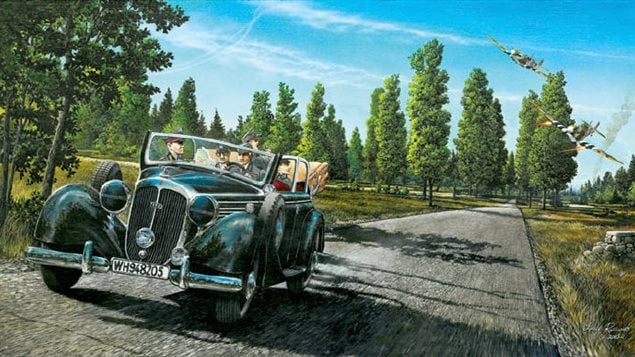
When Fox learned later that he had taken out Rommel, the Canadian was of mixed feelings.
By taking one of Germany’s best tactical senior commanders out of the war, he changed the course of the war and thus may have greatly helped the Allied cause. However, on the other hand he and historians have often wondered exactly what Rommel was planning in relation to Hitler, and a peace with the Allies. Thus Charley wondered that if he hadn’t shot at Rommel, would the officer have managed to end the war early?
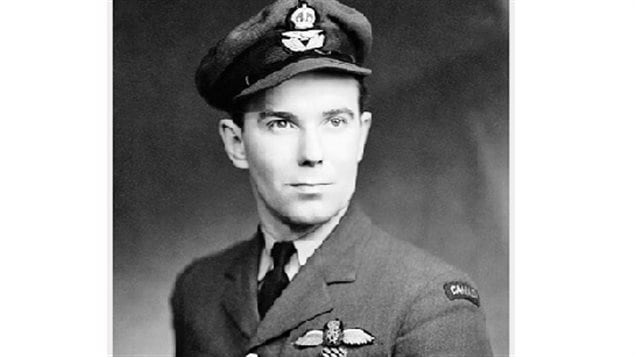
The Americans quickly claimed it was one of their P-47 pilots who hit Rommel’s car, but Germans clearly said it was a Spitfire.
Close examination of flight logs show only Fox’s group was in the air at the right time and place.
In any case the German plot and bomb attack against Hitler took place on July 20, and Rommel’s name came up in interrogation. Although likely not a party to the attack he was blamed as a conspirator and was offered to commit suicide to protect his family from retribution, which he did in October.
As an aside, Charley Fox may have taken part in what was the last combat air patrol, or at least one of the very last patrols.
On May 4th, 1945 a message was read in the 126 Wing officers mess: “From 83 Group Headquarters to all units – all hostilities on the second front will cease at 0800 hours – tomorrow, May 5th, 1945.”

Rousing cheers were heard and a party began which continued well into the night. Then the Wing Commander decided to take three others and go on a final flight. Charley Fox in a Spitfire Mk-IX took off with the group at 06;30. The group flew around (one wonders about their condition for this !) and landed again at 0800 at the time of ceasefire, thus making one of the last, if not the very last air patrol of the war.
Charley Fox continued his connection with flying right into his later years and passed away in 2008.
additional information-sources
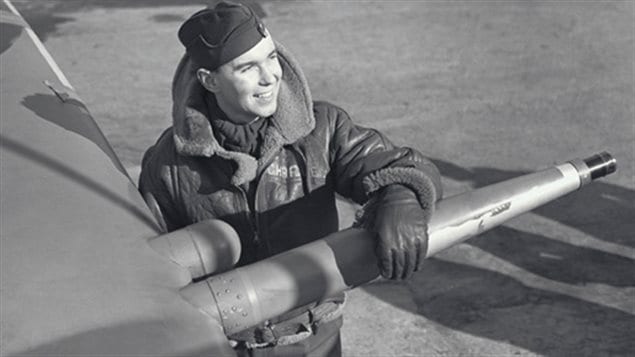






For reasons beyond our control, and for an undetermined period of time, our comment section is now closed. However, our social networks remain open to your contributions.